It is with great pleasure to be a participant in this week assignment of professor @allbert which he taught about POLKADOT ECOSYSTEM, THE ETH CONTENDER, I can say I understood the class and I have been able to give back base on my own understanding and the research I made. I stand corrected in any way as I might have come short in details of a particular question.
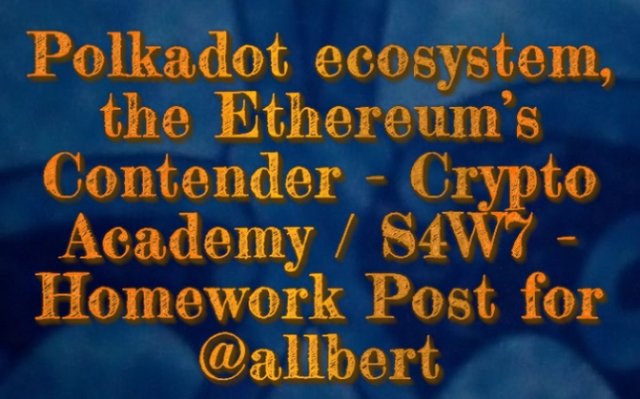

Choose a Project, platform or service belonging to the Polkadot Ecosystem (Polkadot not permitted) and make a detailed post, which must comply with the following aspects:

1-Explain in your own words why you chose it and why do you think it is relevant to the world?
Kusama is a very interesting crypto project. It provides preproduction services to new developers who wish to create a crypto project that would run on the Polkadot network as well as its own network. It does this by facilitating interoperability between the Polkadot network and the Kusama network during the test phase. While at it they put some essential concepts in the new projects that are being developed. They try to solve some of the issues that are found in most of the blockchains that exist.
They know that most blockchains don't have a formal model of governance, and individual stakeholders on the platform are powerless to propose any changes to be made to the system. This makes it that decisions are being made by an opaque group of insiders. On the other hand, Kusama offers in-built governance that is customizable. That means that new blockchains or parachains can leverage the existing built-in, transparent features of governance that are found in Kusama, or they can create theirs which would implement the system style that's best for their community.
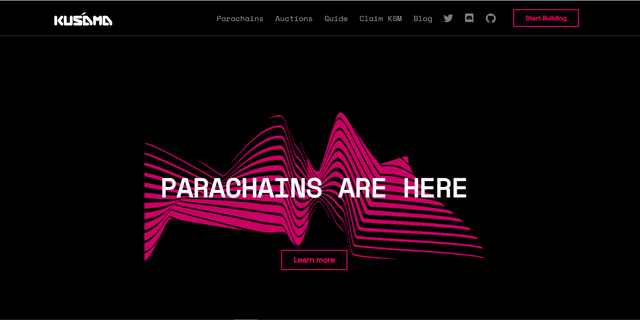.png)
Securing the existing blockchains are difficult and very costly. It requires massive amounts of resources, both computational and energy. This then creates a significant barrier to entry for a new chain and ultimately leads to competition for scarce resources between each chain present in the network. Kusama has an in-built security system that is robust. You get connected automatically when you join the platform.
Most of these blockchains are very costly to build and maintain. The building and development stages take years of hard work and large teams of experts to build. At the same time maintenance is very costly and takes a lot of time in the process. However, on Kusama, the development of a new blockchain is streamlined using Substrate technology. The new blockchain would make use of a Substrate blockchain technology network to simply and also speed up the development and maintenance of the new blockchain.
The transactions fees being charged on the existing blockchains are unpredictable. They fluctuate based on short-term usage and the level of congestion that is currently found in the network. With Kusama, the fees are low and transparent. The fees are known beforehand and the fee structure is customized by the new blockchain teams.
On the existing blockchains, the type of transactions experienced is limited. The transactions experienced in the blockchain and smart contracts are usually a few basic transaction types. For instance, simply sending funds and also triggering a smart contract. Also, transactions between two chains are limited and difficult to carry out, it usually needs the intervention of a centralized entity to help carry it out. On Kusama, any kind and type of transaction can be sent between decentralized applications (dapps) and parachains. This makes it interoperable and also creates an avenue to a host of innovative services.
In the existing blockchains, they depend on centralized organizations to help finance activities on the network, and the communities on the network have no financial agency. But parachains can leverage the financial treasures found on the network.
Existing blockchains often experience difficulty during upgrades. Blockchains need to be upgraded periodically to stay relevant. The upgrades done are usually painstaking, because they are slow to evolve and respond as new forms of technology become apparent. Upgrades on Kusama are very easy and seamless. Upgrades done is like upgrades done on a typical app on your phone, and happen in the background.
Scalability on an existing blockchain is very limited as transactions are processed very slowly. This makes it very slow leading to bottlenecks, causing congestion in the network thus leading to high fees when dapps usage spikes. On Kusama, transactions are processed “in parallel” as the transaction spread across the entire network to ensure maximum scalability.
The existing blockchains are isolated. That is, they cut off from each other and lack communication with each other, making the free flow of data experience friction. Kusama network offers interconnectedness. This means that the ecosystem on Kusama allows for free flow of data between chains and also between chains outside Kusama, thus leading to an innovative interoperable operation.
Most of the existing blockchains are 1 size fits all. The design of the system is such that it is limiting. No capacity for it to be optimized for specific use cases, and this allows for compromises and tradeoffs to be made. Parachains or new blockchains on Kusama are specialized for multiple specific use cases, thus enabling more optimized services as well as thriving multifaceted economies.

2- Description of the project and its platform. (Screenshots needed)
On the platform as you navigate through, you would find that there are different items at the items bar at the top. You can start to click on each of the items to get a good view of what the platform offers.
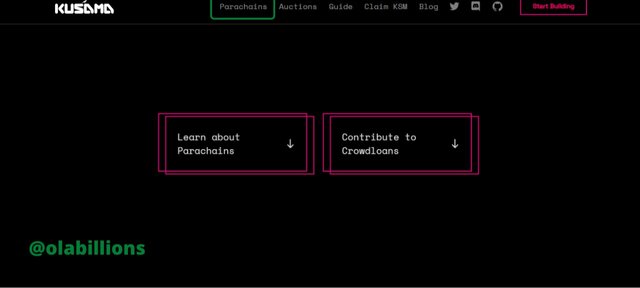
I started by clicking on Parachains. You would get a basic introduction to parachains. It explains the concepts of parachains and their functions. It has two pink boxes which talk more about parachains and how to contribute to Crowdloans.
When you scroll down more you get to see more literature about parachains, and how it is differentiated from other types of blockchains. You also get to learn how to connect to Kusama by leasing a parachain slot via auction. More information is given on slot auctions and crowdloans. It shows how to partake in the auction process on the platform.
It also gives a description of how to participate in the crowdloan. The procedures involved are listed. It also shows how one can protect himself from scams. It shows how to create an account with a video to back it up. Finally, some NFT that were created to celebrate the launch of Kusama parachains is displayed further below. When you scroll down further you get to have a view of them.
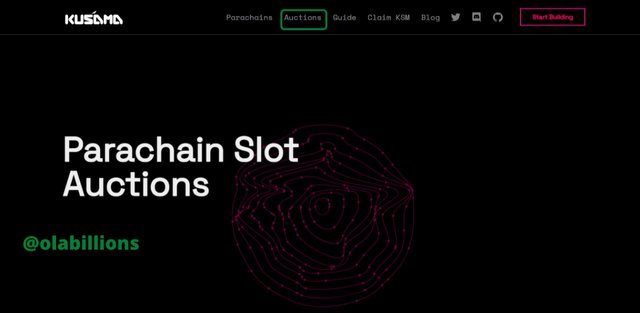
Next on the items bar is Auction. Here it gives an introduction on how to get connected to Kusama's network through their parachains. This is achieved through leasing a slot on the relay chain by engaging in a permissionless auction. This is done for testing and optimization.
Scrolling down more, you would get to see how to participate in the auction process. It gives a summary explanation of how to participate in the auction process. It also has a guide for parachain teams that wants to go through the auction and crowdloans.
Going down more gives a basic explanation of the mechanics involved in the auction process. The process involves a 5 step process. There is also a video to cater to the auction process. It also shows the timetable for the period when the auction takes place and how the auction is being run.
The full list of auction schedules is displayed below for when the auction would commence and end and the duration for the slot that was auctioned for. The description for the auction ending period is also displayed.
More information about the crowdloan is given below. It shows the processes involved in a numbered list and also has a video to compliment it. It also shows how to participate in the crowdloans and how to go about it. A video is also given for more reference. There is also more information given about how to detect crowdloan scams. When you scroll down further, you get to see it in full. There's also a FAQ where users on the platform can click on to get their queries sorted out.
The next item is Guide. When you click on it, you are directed to another web page. On this webpage, you would see Docs, click on it.
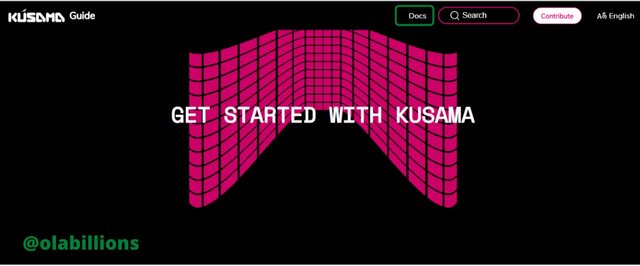
A new page would be displayed showing full documentation of the Kusama platform. It is shown in the image below. On the left-hand side of the page, you would see different aspects of the documentation. You can start by clicking on Home. There it gives a detailed explanation of Kusama's platform and what it entails. You can also go through the other aspects of the documentation presented on this page.
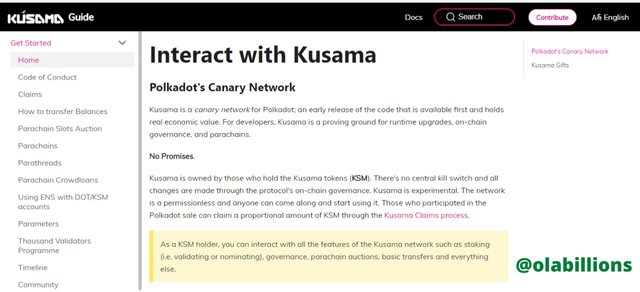
Another item on the items bar is Claim KSM. This is to show users the steps in obtaining KSM which are the native tokens of Kusama. When you click on claim KSM, you are directed to another webpage. It is similar to docs above and in fact you get to the docs page, however, it takes you to the second aspect of the documentation which is Claims. Here you are shown a detailed step-by-step procedure on how to obtain the native tokens of Kusama KSM. Below is an image giving a good view of the claims page.

Another item on the items bar that is interesting is Start Building which is located at the far right of the items bar. When you click on it, it immediately directs you to a new webpage. This new webpage is the developmental platform where developers go to build their blockchains. The platform is called Substrate and is the platform where Kusama & Polkadot was designed and developed on.
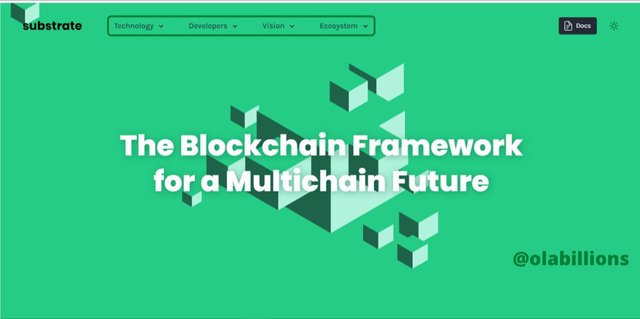
At the top of the page shows its features such as Technology, Developers, Vision, and Ecosystem. Each of these has a dropdown list that links you to different aspects of the platform.
Founders of Kusama
In 2016, Kusama was founded by Gavin Wood, Peter Czaban, and Robert Habermeier. All of them combined are also the creators of Polkadot. Also, Gavin Wood is a co-founder of Ethereum.
The background of Gavin Wood is astonishing. He created Solidity, which is a programming language used by developers to write decentralized applications (dapps) on Ethereum's blockchain. He was the first CTO on Ethereum's Foundation and had worked in Microsoft as a research scientist.
Mr. Gavin is also the founder of Parity Technologies, this company manages Substrate; a software framework where Kusama developers can develop new parachains. He is also the president of Web3 Foundation.

3- Functionalities and real-life applications. (Screenshots needed)
Hoping on the Kusama platform and navigating around it. We can see that the functionalities are a little bit different in that they provide more information on how to start the processes involved in using Kusama to develop a new blockchain. The functionalities are tied to the use of the information provided to help new developers know how to get to the point of developing a blockchain.
To get to the point of developing a new blockchain or parachain, a developer has to first go through the process of Auction. This is done to get a lease on a parachain slot.
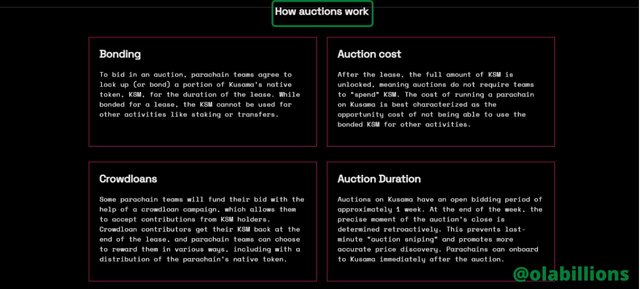
These are the processes of involved in performing the auction.
1. Bonding A new developer would have to lock up (or bond) the portion of KSM at their disposal during the lease period. During this period the KSM cannot be used for another purpose.
2. Auction Cost - After the lease, the total KSM that was locked would be unlocked. This simply means that the cost of bonding on Kusama is the opportunity cost for not using the bonded KSM for another purpose.
3. Crowdloans - In the event that the development teams cannot fund their projects bonding on their own. They can perform a crowdloan. This allows them to get contributions from KSM holders. After the lease, the contributors would get their KSM tokens back, and the developers can also decide to reward the contributors as they deem fit.
4. Auction Duration - This is the schedule for the auction event. They have a bidding period that lasts up to 1 week. After that, the auction event is closed. Then the new development team or parachain can now be on the Kusama platform.
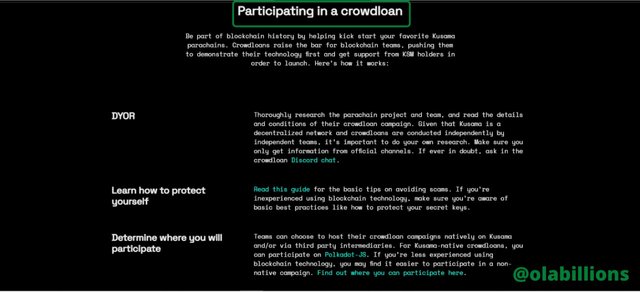
The Kusama platform also functions as an advisor as it gives some tips on how to participate in crowdloans. The tips involve doing your own research, protecting against scams, and deciding where you want to participate in the crowdloans.
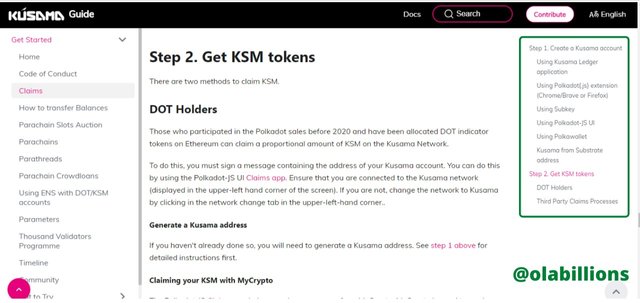
It also functions as a guide to creating an account and operating on the platform. Before you can participate in the auction process, you need to get the tokens and this is fundamentally tied to creating an account.
The image above shows how to create an account on Kusama, after which he can get his KSM tokens.
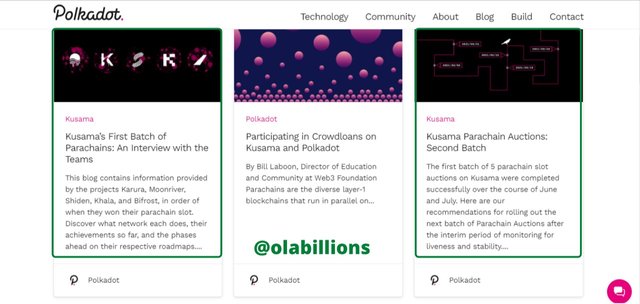
It also serves as a news outlet where updates of the network are being disseminated. To catch a glimpse of what is happening, click on the blog on the platform and it would take you to its blog page.
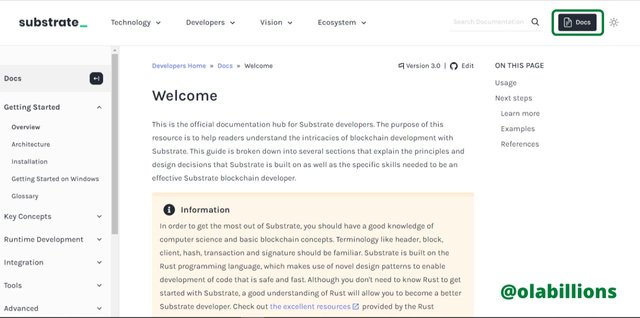
It also directs new blockchain developers to the substrate technology platform. A new developer can get acquainted with the substrate platform by clicking on Docs.
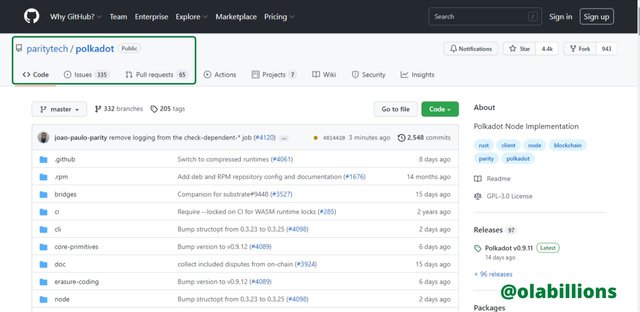
New developers can also write codes on Paritytech via Github. The sites can direct developers to the code page.
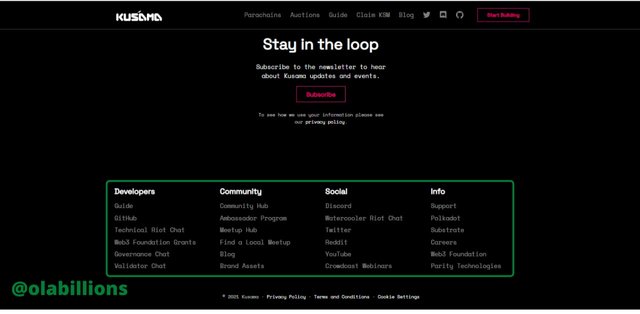
At the tail end of Kusama's platform, users can make quick decisions on where they want to go to on the site through the directory that is there. It includes Developers, Community, Social, and Info.

4- Future development and associated projects. (Screenshots needed)
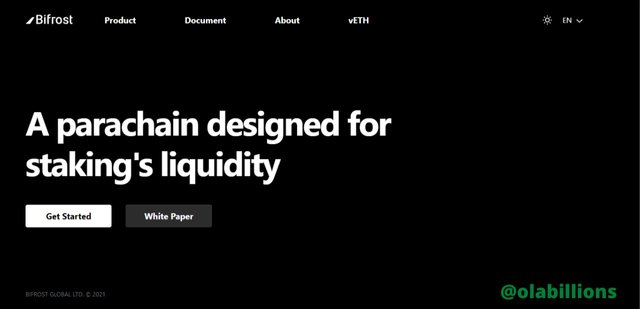
Bifrost is a platform where users can participate in decentralized finance (defi) applications and at the same time earn rewards from staking. They aim to allow users to stake their tokens from any cryptocurrency on their platform.
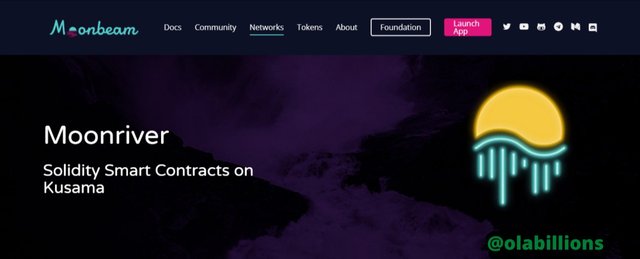
Moon River is a parachain on Kusama. It is a smart contract platform that is compatible with Ethereum's blockchain. It behaves like Kusama where it is a canary network to Moon Bean. That is new codes are tested and experimented on Moon River before they are then implemented on moon river.
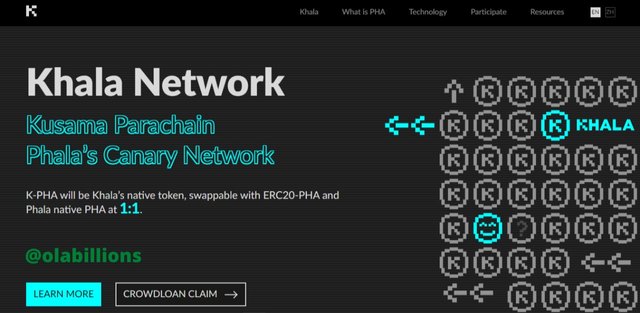
Khala Network is a network that is based in cloud computing. It is a blockchain network that enables trustless computation, where the processing of cloud computing is done without breaking data confidentiality. In order words, it is a data privacy network.
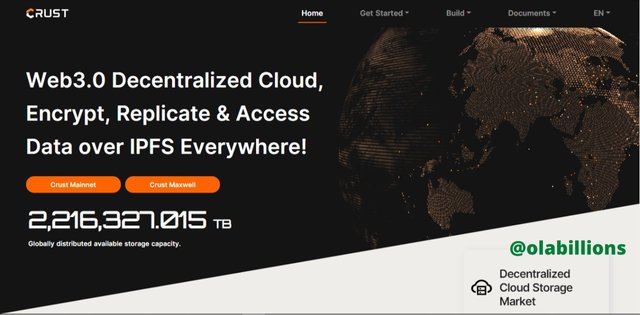
Crust Network is a storage protocol that is decentralized and provides an incentive layer for IPFS storage network nodes. Because IPFS nodes are distributed across the world, Crust uses TEE hardware technology to tackle the issues of node workload reporting.

5- Make a technical analysis of the token of the selected platform, then through your validated exchange account make the purchase of the token (15 USD as a minimum). Screenshots and an explanation of the procedure are required
Kusama has it native currency KSM. It has an important role because it is used for the operations and maintenance of the network.
When a user obtains KSM and then go ahead to stake it the user gain the right to vote on an upgrade on the network, and every vote made is directly proportional to the amount of KSM cryptocurrency the user stake.
KSM is also used to reward network members, but that depends on the number of coins that have been staked by each member. A member can act as a validator or as a nominator and receive a reward in each respect.
The supply for KSM is not capped, instead, they are released in perpetuity and at a rate of inflation that is predetermined.
For trading KSM I used a combination of Moving Averages (MAs) and Relative Strength Index (RSI). The moving averages comprise 9, 21, and 99 MAs.
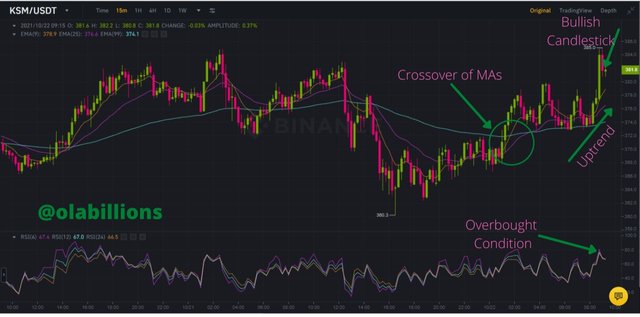
The image above is a 15 Minutes chart of KSMUSDT. It consists of 3 Moving averages lines and RSI indicators installed on it. The MAs are 9-brown color, 21-purple color, and 99-light blue color. When the 9 MA, crosses over the 21 MA it gives a signal. If the cross-over of the 9 & 21 crosses over the 99 MA it makes the initial signal stronger.
We can see on the image that the 9 MA had crossed the 21 MA, and both then crossed the 99 MA which indicates a strong bullish trend. Also, the 99 MA acts as strong support or resistance line. In this instance, it acts as a strong support line.
Again the RSI indicates a bullish movement, however, the indicator line is at the overbought condition. Meaning that a downtrend is about to occur. But before it occurs there are going to be some buyers buying the coin. This is then indicated by the current bullish candlestick at the time of writing.
So based on all these I made a buy entry.
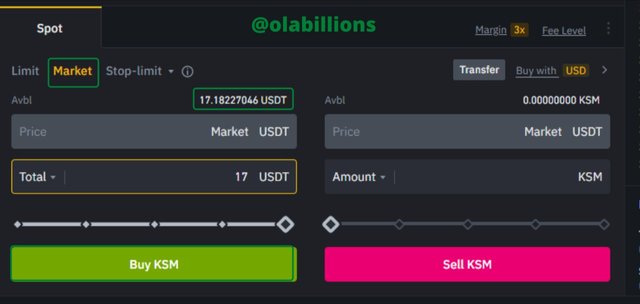
In the trading portal, I placed the entry from Limit to Market. My available balance is 17.18 USDT, so I made a purchase of 17 USDT. Then I clicked on Buy KSM.

The market entry was then executed immediately because it is a market order. You can see the time of the transaction, the Side of the entry, the Amount of KSM obtained, the total USDT used, and the completeness of the Market order.

Conclusion
Polkadot has brought about a revolutionary type of blockchain, as it blockchain can scale without the need for forking and unnecessary upgrades. But once an upgrade has been decided on it is done in a seamless and easy manner.
The same is said of Kusama, in fact, I can say that Kusama and Polkadot are the same. However, they are slightly different in the way they function. While Polkadot is the main blockchain, Kusama is a blockchain that mimics Polkadot but is used as a testing and experiment environment using real conditions.
This means that most of the functionalities of Polkadot are found in Kusama. But Kusama is where new blockchains or parachains pass through before they are deployed on Polkadot. That said some of the protocols found in Kusama are less stringent when compared with Polkadot.

You've got a free upvote from witness fuli.
Peace & Love!
Downvoting a post can decrease pending rewards and make it less visible. Common reasons:
Submit
Data input is a briskly growing sector in Pakistan. Information Transformation Services can meet a variety of offline data Entry Services
competently and professionally. ITS will not only provide various data entry services to customers, but will also offer some creative and customized solutions to meet your needs
Downvoting a post can decrease pending rewards and make it less visible. Common reasons:
Submit